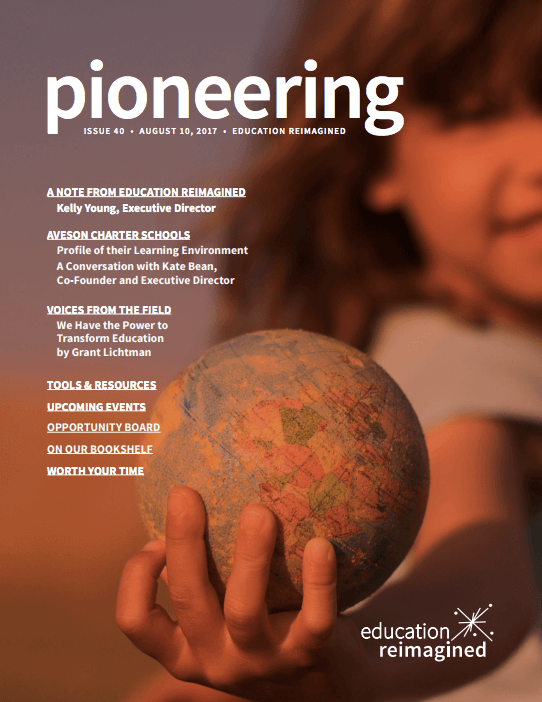Issue 40
August 10, 2017
Ralph Marston
Professional Football Player
You've done it before, and you can do it now. See the positive possibilities. Redirect the substantial energy of your frustration and turn it into positive, effective, unstoppable determination.
In This Issue
Hello Pioneers,
This summer, we are grappling with how you know a learner-centered environment is learner-centered. This may seem like a silly question since we created the “learner-centered education” distinction nearly two years ago. But, as you know, going from theory to practice and from a small group to the entire public exposes new opportunities and challenges.
An obvious answer might be that an environment is learner-centered if it is implementing all five learner-centered elements. However, in our experience, you can operate with a learner-centered mindset, while not yet incorporating all five elements.
This is because the paradigm or mindset is actually the launching pad from which the five elements emerge. The learner-centered paradigm is characterized by the view that:
- learning is the work of the education system and the learner is the “worker;”
- all learners are naturally unique, curious, capable, and wondrous; and
- learning happens naturally when we start with learners’ interests and curiosities.
With these characteristics established, how would you recognize a learning environment is learner-centered? Personally, I would base my answer on observations in the field. When learners are co-creating their learning pathways (not just through courses) in and out of school buildings and can express what they are learning and why it excites them—this is learner-centered. When learners can articulate their interests and latest curiosities—this is learner-centered. When I ask educators immediately introduce me to learners who can better express the story of their environment—this is learner-centered.
Oftentimes, the structural changes take all the focus. But, when that occurs, the system is squarely at the center. The conversation becomes: How can education be better delivered to kids? When the learner is at the center, the system changes are embraced because of the freedom they provide learners and educators to put learners’ interests, needs, and aspirations at the center. The system adapts to the individual learner, rather than the learner having to adapt to the rigidity of the system.
As the learner-centered distinction continues evolving, we want to collect the community’s reflections on how they distinguish learner-centered (versus school-centered) education. Please share your thoughts here!
Warm Wishes,
Kelly Young
P.S. We’ve curated a list of 17 learner-centered presentations looking to take center stage at SXSWedu 2018. “Vote Up” these awesome speakers, so learner-centered education can be the talk of Texas next spring.

